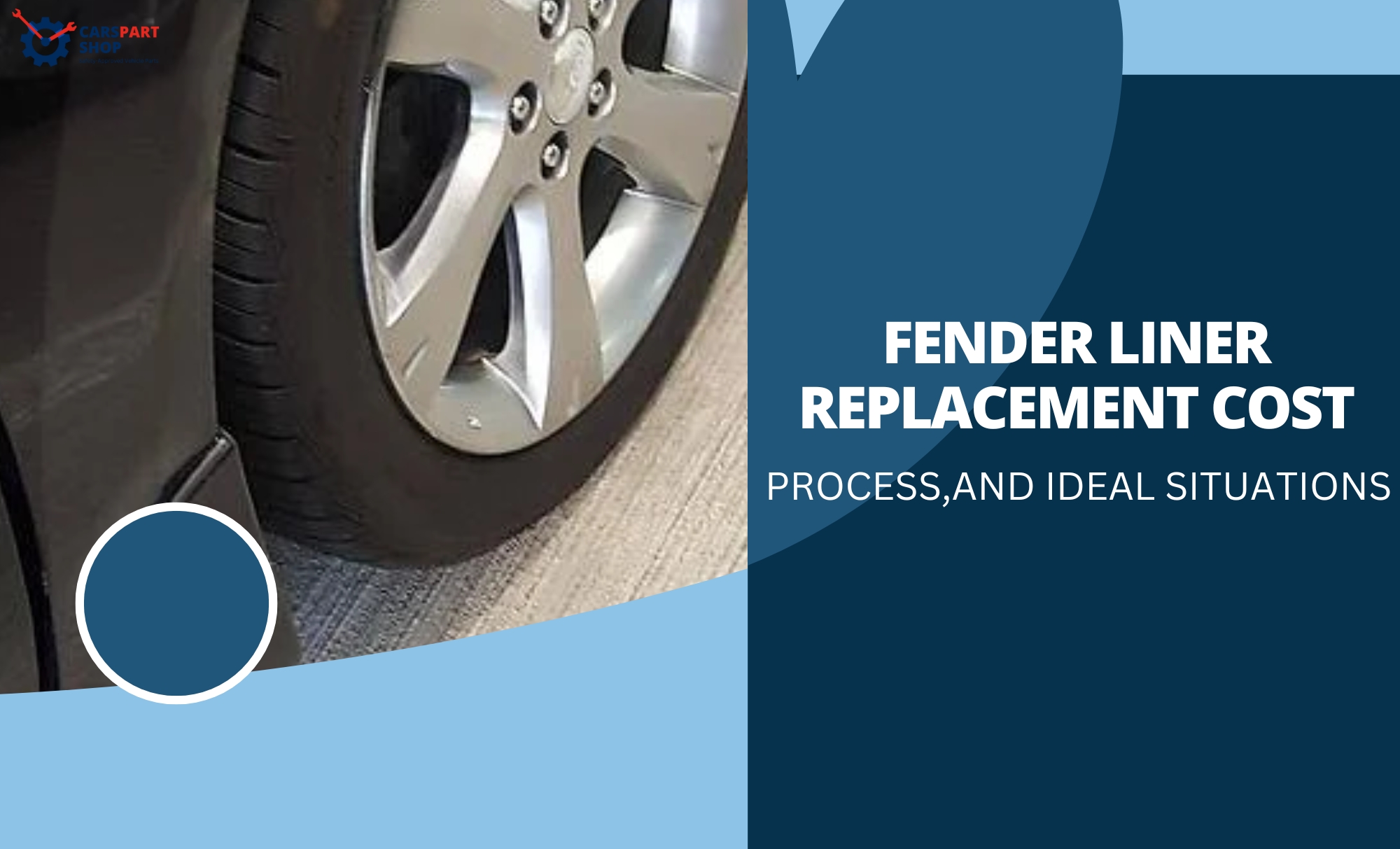Fender liners, also known as inner fender wells, are plastic or metal components mounted inside a vehicle’s wheel well. They help to protect the engine compartment and other vital components from dirt, debris, and moisture that the wheels can kick up. Over time, fender liners can become damaged or worn out and require replacement. So, it is important to know the fender liner replacement cost.
In the following blog, we are going to see when you should replace the fender liner and the ideal replacement process, along with its cost.
How Much Does a Fender Liner Replacement Cost?

Fender liner replacement cost can vary depending on several factors, including the make and model of the vehicle, the type of fender liner needed, and where the work is performed. On average, the cost of replacing a fender liner can range from $100 to $300.
If you are considering replacing your fender liner, it’s essential to get an accurate estimate from a trusted mechanic. The mechanic will inspect your vehicle to determine the type of fender liner needed and provide you with a detailed estimate of the cost of parts and labor.
While it may be tempting to try to save money by performing the replacement yourself, it’s important to note that this can be a challenging and time-consuming task. In addition, improper installation of the fender liner can cause damage to other parts of the vehicle or even create a safety hazard.
In conclusion, the cost of fender liner replacement can vary depending on several factors, and it’s important to get an accurate estimate from a trusted mechanic. By doing so, you can ensure that your vehicle remains protected and running smoothly for years to come.
IF YOUR FENDER LINER HAS BECOME DEFECTIVE, CONTACT US TODAY FOR THE INDUSTRY-QUALITY PRODUCT.
Replacement Process of a Detrimental Fender Liner
Replacing a fender liner may seem like a daunting task, but with the right tools and instructions, it can be done easily. Here are some steps to help you replace a fender liner:
Gather your tools and materials:
You will need a socket wrench, screwdrivers, pliers, a jack, jack stands, a replacement fender liner, and any other tools specific to your vehicle.
Raise the vehicle:
Use a jack to lift the vehicle and place jack stands under it for safety.
Remove the wheel:
Use a socket wrench to remove the lug nuts and take off the wheel.
Remove any attachments:
Depending on your vehicle, you may need to remove additional components, such as plastic clips, screws, or bolts that hold the fender liner in place.
Remove the old fender liner:
Carefully pull the old fender liner out of the wheel well. It may be helpful to use pliers to remove any stubborn clips or screws.
Install the new fender liner:
Carefully fit the new fender liner into the wheel well, making sure it is properly aligned with any attachment points.
Reattach any components:
Replace any plastic clips, screws, or bolts that hold the fender liner in place. Make sure they are tightened securely.
Replace the wheel:
Put the wheel back on and tighten the lug nuts.
Lower the vehicle:
Use the jack to lower the vehicle and remove the jack stands.
Test the fender liner:
Give the vehicle a test drive to ensure the new fender liner is securely in place and functioning properly.
When You Should Replace a Faulty Fender Liner?
However, over time, the fender liner may become damaged or worn out, leading to a variety of faulty symptoms.
Here are some common symptoms of a faulty fender liner:
Excessive road noise:
A worn-out fender liner can cause excessive road noise, especially at high speeds. It is because the liner is no longer able to reduce the amount of noise that enters the cabin effectively.
Reduced fuel efficiency:
A damaged fender liner can also affect the car’s fuel efficiency. It is because it can disrupt the airflow around the wheel well, causing the engine to work harder and burn more fuel.
Vibrations and rattling sounds:
If the fender liner is loose or damaged, it can cause vibrations and rattling sounds while driving. This is because it is no longer securely fastened in place and is rubbing against other parts of the car.
Wheel well damage:
The fender liner is designed to protect the wheel well from debris and moisture. If it is damaged or missing, the wheel well may become corroded or damaged, leading to costly repairs.
Dirt and debris buildup:
A faulty fender liner may not be able to effectively block dirt and debris from entering the wheel well. It can cause a buildup of grime and can eventually lead to rust or corrosion.
A faulty fender liner can cause a variety of issues that can negatively impact the car’s performance and longevity. If you notice any of these symptoms, it’s important to have the fender liner inspected and replaced if necessary.
What is Fender Liner?
A fender liner, also known as a splash guard or inner fender, is a plastic or rubber component that lines the inside of the fender well of a vehicle. Its primary function is to protect the vehicle’s body from dirt and debris, and the wheels throw up water.
How does it Work?
The fender liner works by creating a barrier between the wheel and the vehicle’s body. As the wheel rotates, it kicks up rocks, dirt, and other debris, which can cause damage to the car’s paint and body. The fender liner prevents this from happening by catching the debris and directing it back down toward the ground.
In addition to protecting the car’s body, the fender liner also helps to reduce road noise and improve aerodynamics. By smoothing out the airflow around the wheel, the fender liner reduces drag and improves fuel efficiency.
Fender liners are typically made from durable materials like ABS plastic or rubber. They are designed to withstand the elements and can last for many years. If a fender liner becomes damaged, Car fender replacement needed promptly to prevent further damage to the vehicle’s body.
Frequently Asked Question
A fender liner, also known as a wheel well liner, is a plastic or rubber piece that is located inside the wheel well of a vehicle. It is designed to protect the car’s body from dirt, debris, and moisture while also providing a smooth surface for airflow to pass through.
The cost of a fender liner replacement can vary depending on several factors, such as the make and model of the vehicle, the location of the repair shop, and the cost of the replacement part. On average, the cost can range from $100 to $300.
Yes, it is necessary to replace a damaged fender liner. A damaged or missing fender liner can cause a variety of issues that can negatively impact the car’s performance and longevity, such as excessive road noise, reduced fuel efficiency, vibrations and rattling sounds, wheel well damage, and dirt and debris buildup.
It is possible to replace a fender liner yourself, but it can be a difficult and time-consuming process. You will need to have the necessary tools and mechanical skills to remove and replace the fender liner, as well as access to the replacement part. We recommend having the replacement done by a professional mechanic to ensure the job is correct.







